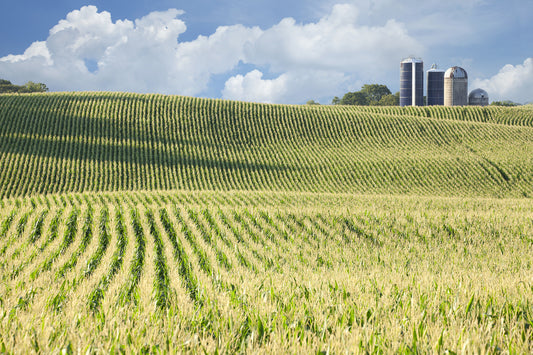How much dip can a corn chip dip if it’s a Pipcorn Corn Dipper chip?
Answer: All the dip.
If you haven’t noticed by now, Pipcorn Corn Dippers aren’t like other corn chip scoops. They’re sturdier, without being heavy. Crunchier, without crumbling. More flavorful, yet less greasy.
How do we do it? No, it’s not some new-fangled bionic corn or engineered food additive at play. It’s actually the opposite: our corn is so old it’s a family heirloom.
“The corn we use to make our dippers comes from a co-op of really small family farms in Oaxaca, Mexico,” explained Pipcorn co-founder Jeff Martin. “These farmers have been growing this type of corn for generations. They’ve traditionally used it to make food for their families.”
Pipcorn pays a premium for this unusual variety of corn, but Jeff said it’s absolutely worth it. “Our corn dippers just wouldn’t be the same without it.”
The Oaxacan corn that Pipcorn Corn Dippers are made from is actually a white corn. Jeff and his two co-founders selected it over more commonly used yellow corn because white corn is sweeter, producing chips with more flavor. The starch in white corn also behaves a bit differently, so chips made with white corn don’t soak up as much oil as yellow corn chips. The result is a flavorful, crunchier chip that won’t leave your fingers shiny with grease.
The special heirloom white corn is 75 percent of what makes Pipcorn Corn Dippers so crazy good. The other 25 percent is in the cooking process itself.
For those of you who aren’t in the snack food business, there are two ways to make a corn chip. The first is to take corn flour, mix it with water to make a dough, and then shape and fry the chips.
But rather than take the easy way out, Pipcorn opts for the more authentic route.
The other way to make corn chips is to start with whole-kernel corn and steep it in water for 11 hours with calcium hydroxide, or lime, to soften, before stone grinding it to create masa dough. This time-consuming process is called nixtamalization and can be dated all the way back to 1200 BCE.
“In ancient times, people would test different ways of cooking corn to avoid upset stomachs and to balance out the nutritional profile. The Aztecs and Mayans (among others) discovered that if you grind corn on limestone, it softens the shell, so that you can digest it, and provides certain important nutritional benefits. We’re replicating that centuries-old tradition,” Jeff explained.
After the corn is soaked and ground, the corn dipper manufacturing process becomes more modern. (Gotta keep up with demand somehow!) The masa dough goes through an extruder, which shapes and cuts the dough, dropping the formed chips into the fryer.
Rather than a large vat, Jeff described the fryer as a tunnel with a rushing current of hot sunflower oil. “The chips drop into the tunnel and get carried away. It’s a very quick, shallow fry.”
Next they receive a sprinkle of salt and a hint of flavor.
“Because these are dipper chips, we didn’t want them to be loaded with flavor. We wanted subtle flavors that play nice with others,” Jeff said. “Sea salt is classic, and truffle came naturally to us because we’ve had so much success with our Truffle Mini Heirloom Popcorn. As for lime, it’s delicious with queso and salsa, and we knew it was something consumers would like.”
After a quick cool down, the chips are ready to be bagged, shipped and, eventually, dipped.
For Jeff, that usually means Truffle Corn Dippers paired with a spicy habanero salsa. “It sounds like an odd combination, but Teresa [my wife and co-founder] got me into it. I’m hooked.”

